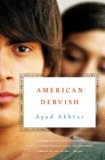Summary | Excerpt | Reviews | Beyond the book | Read-Alikes | Genres & Themes | Author Bio

To Be or Not to Be Amish
by Tom ShachtmanFrom the book jacket: Rumspringa is a fascinating look at a little-known Amish coming-of-age ritual, the rumspringa - a period when Amish youth are allowed to live outside the bounds of their faith, experimenting with alcohol, premarital sex, trendy clothes, telephones, drugs, and wild parties. By allowing them such freedom, their parents hope they will learn enough to help them make the most important decision in their lives - whether to become Amish.
Comment: I was interested to read Rumspringa because I've long admired the Amish for maintaining their simple ways in a complicated world, and particularly admired the concept of rumspringa, which gives teenagers the opportunity to live outside the community, both physically and morally, while they explore the world and decided whether or not to be baptized into the Amish community. However, sad to say, having read Rumspringa, I've experienced a substantial change of opinion.
Superficially, rumspringa seems an eminently sensible idea, but the reality in the communities profiled in this book appears to be quite different. Firstly, the Amish children are kept cooped up within their community as much as possible until the age of 16 when they're given the freedom to experiment (the level of freedom depends greatly on the particular community). Many of the teens stay close to home, perhaps going to the odd Saturday-night social organized by adults, but some "spread their wings" to experience the wider world. However, the world that these teens are able to experience seems sadly limited. Not only are Amish children are not allowed to stay in school past 8th grade, so many job opportunities are closed to them; but their experience of the wider world rarely extends further than the local town - not far enough for them to really have any idea of what could be on offer to them. Added to which, having been given little or no advice on issues such as sex, drugs and alcohol, they are naive in the extreme which puts them at substantial risk. Lastly, if a teen decides not to be baptized into the community, they are not welcome to return to that community. Taking these factors into account what's surprising is not that 80-90% (estimates vary) decide to be baptized Amish, but that 10-20% have the courage of their convictions to leave!
At the heart of the Amish philosophy is a belief that humans are inherently weak and susceptible to temptation and thus need protecting - the strict rules of the community provide this protection. The central question that Shachtman explores is whether this protection is a white picket fence encompassing a beautiful garden of tranquility, or a barbed wire fence that keeps in more than it keeps out.
If you find the subject of the Amish interesting you might also enjoy the well-reviewed Ohio Amish Mystery series by P.L. Gaus. The fifth in this series, A Prayer for The Night, was published last year.
![]() This review was originally published in The BookBrowse Review in August 2006, and has been updated for the
June 2007 edition.
Click here to go to this issue.
This review was originally published in The BookBrowse Review in August 2006, and has been updated for the
June 2007 edition.
Click here to go to this issue.

If you liked Rumspringa, try these:

by Ayad Akhtar
Published 2012
American Dervish is a brilliantly written, nuanced, and emotionally forceful look inside the interplay of religion and modern life.

by Miriam Toews
Published 2012
That rare coming-of-age story able to blend the dark with the uplifting, Irma Voth follows a young Mennonite woman, vulnerable yet wise beyond her years, who carries a terrible family secret with her on a remarkable journey to survival and redemption.
Your guide toexceptional books
BookBrowse seeks out and recommends the best in contemporary fiction and nonfiction—books that not only engage and entertain but also deepen our understanding of ourselves and the world around us.